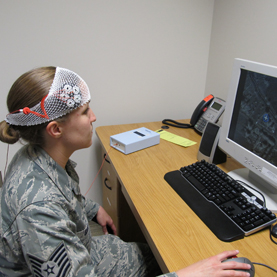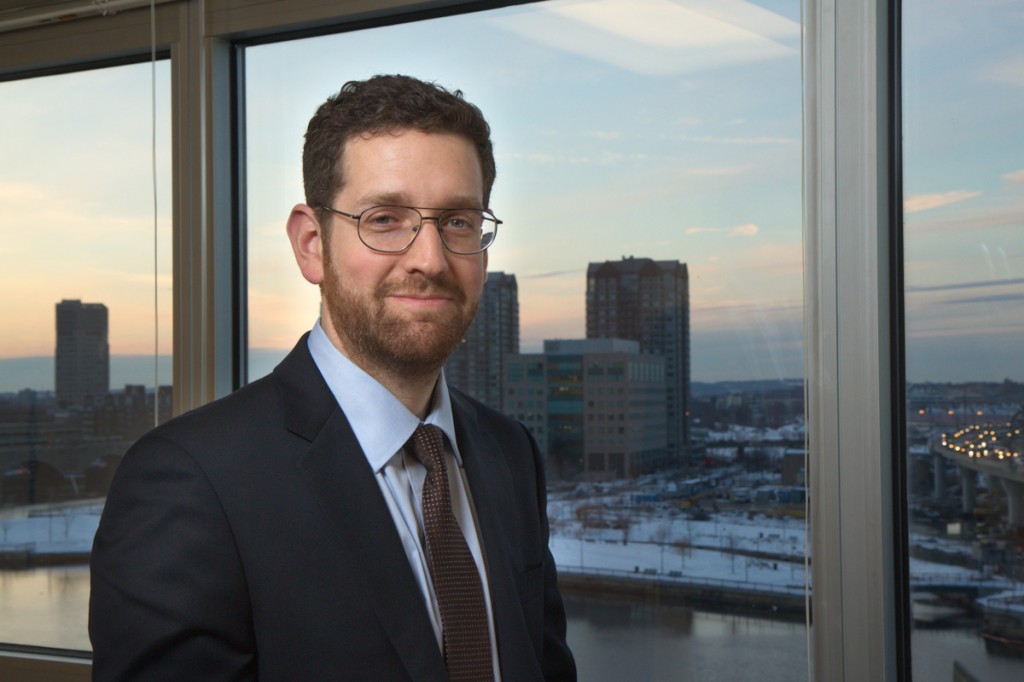Marom Bikson is CEO of Soterix Medical and Associate Professor at City College of New York in the Department of Biomedical Engineering. Marom is a distinguished tDCS scientist and prominent in the development of HD-tDCS. Download the interview here (zipped mp3). (Firefox users- there is an audio player here, but it’s displaying intermittently. Trying to track down the issue. In the meantime you can download the episode or open the page in another browser).
(We got a good forty minutes of interview in before the Skype gremlins caught up with us. I had to cobble an ending together.)
Show Notes:
Post-Doc, Neurophysiology Unit, University of Birmingham Medical School, U.K., 2003
Ph.D., Biomedical Engineering, Case Western Reserve University Cleveland, OH, 2000
B.S., Biomedical Engineering (EE Concentration), Johns Hopkins University, Baltimore, MD, 1995
Introduction to Transcranial Direct Current Stimulation (tDCS) in Neuropsychiatric Research
5th International Conference on Non-invasive Brain Stimulation 2013
Instrumentation – making medical gizmos, process.
IRB- Institutional Review Board
IRB at the FDA
Small Business Technology Transfer STTR grant.
Soterix partners
Abhishek Datta CTO,
Lucas Parra
Bootstrapped at this point.
Difficulty in engineering medical devices is in designing for the anomalous cases- how that 1 in 999 times situation could go wrong.
Clinical trials. Depression, (Colleen Loo, Blackdog Institute), pain, stroke, epilepsy clinical trials ongoing.
Customizing technologies to match needs of particular clinical situations.
Soterix developed software designed for clinicians.
HDTargeting
HDExplore
Modeling current flow through the head.
Perhaps depression studies are closest to FDA qualification for tDCS?
(Prediction is very hard, especially about the future – Yogi Berra.)
A device (NorDoc Smartstim) that can go to 4mA is being used in a smoking cessation trial? (Trial info indicates 2mA current dose.)
FDA tDCS approval would be device-specific at first. But would open the door to ‘me too’ mechanism, FDA 510(k)
HD tDCS can have multiple cathodes and or multiple anodes. An array of 4 small anodes splitting 2mA, for example (.5 mA each electrode), can function as an anodal ‘virtual pad’. Assumes cathode somewhere else on the body).

Image By Richard McKinley USAF
Tolerability is how tolerable in terms of side effects a medication is.
Transcutaneous Spinal Direct Current Stimulation Example tsDCS paper.
A Theory of tDCS (“Gross oversimplification”) As positive current flows into the cortex it passes neurons.
Because of the nature of neurons, this positive current depolarizes somas (cell’s body), increasing excitability, thereby increasing the functionality & plasticity of that region (hypothesis… “We really don’t know.”). Under the cathode, somas (cells) are being hyper-polarized – excitabilty decreases.
A synapse is a structure that permits a neuron (or nerve cell) to pass an electrical or chemical signal to another cell.
Pyramidal neuron
Titration, also known as titrimetry, is a common laboratory method of quantitative chemical analysis that is used to determine the unknown concentration of an identified analyte.
TES Transcranial Electric Stimulation
“transcranial electrical stimulation” Merton and Morton 1980
“Priming the network in conjunction with applying tDCS makes a lot of sense, as a way to make the tDCS to do what you want.” (Co-priming – The idea that one would initiate an activity first, and THEN add tDCS.)
DARPA supported accelerated learning.
Memory consolidation.
Lisa Marshall
DIY tDCS community and building medical devices. Redundancy.
tDCS implies proven, vetted protocols, that have been used in clinical trials.
Thanks Marom!


Saw you referenced this on Reddit this past week. Great interview!
Maybe you can do a follow up with Dr. Bikson sometime in the near future, would love to hear his comments on changes since 2013.
Kind of waiting for something major to break. Over the last few years they (Soterix) seem to be doubling down on HD-tDCS and remote-assisted treatment. They also have been doing a lot with computerized current modeling. All of which is great, just not sure how significant it would be for the DIY audience. You can keep tabs on and read most of his research here: http://neuralengr.com/category/news/
The montage that I see applied to the brains of these patients seems to be of a more precise kind than the large anodal/cathodal sponge electrode montage that is used in most tDCS, and I wonder if it is partially responsible for the outcomes that DIY enthusiasts are unable to replicate. Sally Adee’s article initially triggered interest in tDCS among the general public with her reports of a drastic reduction in discursive thought and enhanced focus for several days after treatment, yet few of the anecdotal reports I have read seem to report results as dramatic (many report some degree of cognitive quieting, but not to that extent). However, she is shown using a montage identical to this one and not a DIY set-up.
Most of the DIY experimenters seem to be focusing on anodal left DLPFC (left dorsolateral prefrontal cortex) and the cathode over the contralateral supraorbital area or opposite shoulder. I’m pretty sure that Sally Adee experienced the montage Dr. Weisend reported in our interview, (in fact I think that’s Dr. Weisend setting up her test in this photo). In the interview Dr. Weisend stated, “F10-anodal, cathodal-opposite upper arm, actually does something”. I’m surprised more DIYers aren’t experimenting with that montage.
Interesting. I have experimented with that montage several times in the past few days and it seems to promote a feeling of relaxation, but nothing remotely like she reported (it also seems Adee is using the HD electrode set-up). It is still far too early to make a fair statement, however.
I am interested in tDCS primarily as a support for meditation practice. I have OCD and ADHD and they can make meditation extremely difficult. The primary barrier to successful meditation is sustained focus, and anything that can calm the ceaseless barrage of thoughts is of great value.
An edit of the last sentence of the first paragraph of my previous post: The sentence should have read “I think what tDCS is doing is temporarily sedating Joan and amplifying Philip so he can have a stronger than usual influence on the course of neural events, or visa versa depending on the montage.”
A few decades, that sounds about right. Good thing I’m not getting any older. Actually it depends on how broad an understanding of the process we’re looking for. In terms of consciousness I think we are, in a sense, symbiontic creatures. That is although each of us has only one voice, behind that singular sound lies a group of conscious entities all trying to be heard above the others while still realizing on some level it’s necessary to cooperate with them. In his Noble prize acceptance speech Faulkner referred to “… the human heart in conflict with itself.” A less grand and not as beautiful an analogy would be to compare our attempts to operate at peak neuronal efficiency with trying to herd cats. I think what tDCS is doing is temporarily sedating Joan so Philip can have a stronger than usual influence on the course of neural events, or visa versa depending on the montage.
If we’re looking for a fuller explanation, since tDCS affects consciousness and memory and quantum tunneling and entanglement are, in my opinion, involved with both of those it may be quite a bit longer than ten years.
As a peevish aside, I don’t particularly like the term “ephaptic interaction” that I came across the other day and mentioned in my previous post. If this process were taking place in a purely electrical circuit it would be referred to as Inductive Coupling. I say we take a page from the engineer’s manual and call it “Ephatic Induction.” If you know any linguistically influential people I’d appreciate it if you would give them a call and pass on my suggestion.
Ahh … well it seems the term “ephaptic coupling” has already morphed into “ephaptic interaction” (http://www.neuralengr.com/research/unlocking-the-brain/the-role-of-endogenous-field-effects-in-nervous-system-function) which is essentially ephaptic coupling caused by exogenous fields. So no need to post my previously submitted comment.
In fact we could be decades away from having a full understanding of what’s going on don’t you think? Come to think of it though, we still don’t know exactly what electricity is, but it doesn’t stop us from using it.
After explaining the mechanism behind tDCS Marom Bikson chuckles and candidly adds something like, “Actually the short reply is ‘We don’t know.’ He’s correct we don’t but, using a term that is generally employed to describe the effect of endogenous fields on neuronal activity, my guess is that a type of ephaptic coupling is occurring but in this case the coupling is spurred by the tDCS exogenously generated fields.
Hi! Thanks a lot for doing these and for all the posts on reddit. One request though, could you make these available via iTunes?
Thanks! It’s on my ToDo list. I’m embarrassed that I haven’t done it already. This week for sure.